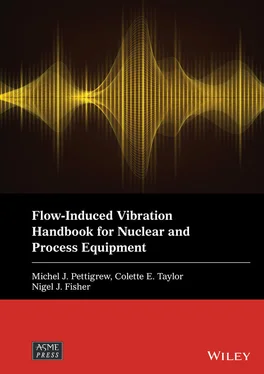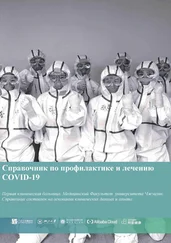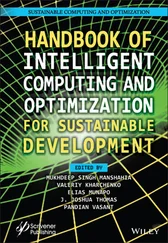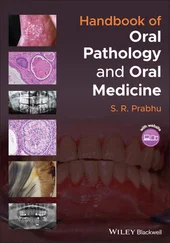1 Cover
2 Series Page
3 Title Page
4 Copyright Page
5 Preface
6 Acknowledgments
7 Contributors
8 1 Introduction and Typical Vibration Problems 1.1 Introduction 1.2 Some Typical Component Failures 1.3 Dynamics of Process System Components References
9 2 Flow‐Induced Vibration of Nuclear and Process Equipment: An Overview 2.1 Introduction 2.2 Flow Calculations 2.3 Dynamic Parameters 2.4 Vibration Excitation Mechanisms 2.5 Vibration Response Prediction 2.6 Fretting‐Wear Damage Considerations 2.7 Acceptance Criteria References
10 3 Flow Considerations 3.1 Definition of the Problem 3.2 Nature of the Flow 3.3 Simplified Flow Calculation 3.4 Multi-Dimensional Thermalhydraulic Analysis Acronyms Subscripts References
11 4 Hydrodynamic Mass, Natural Frequencies and Mode Shapes 4.1 Introduction 4.2 Total Tube Mass 4.3 Free Vibration Analysis of Straight Tubes 4.4 Basic Theory for Curved Tubes 4.5 Free Vibration Analysis of U‐Tubes 4.6 Concluding Remarks References
12 5 Damping of Cylindrical Structures in Single‐Phase Fluids 5.1 Introduction 5.2 Energy Dissipation Mechanisms 5.3 Approach 5.4 Damping in Gases 5.5 Design Recommendations for Damping in Gases 5.6 Damping in Liquids 5.7 Discussion 5.8 Design Recommendations for Damping in Liquids Nomenclature Subscript References
13 6 Damping of Cylindrical Structures in Two‐Phase Flow 6.1 Introduction 6.2 Sources of Information 6.3 Approach 6.4 Two‐Phase Flow Conditions 6.5 Parametric Dependence Study 6.6 Development of Design Guidelines 6.7 Discussion 6.8 Summary Remarks References
14 7 Fluidelastic Instability of Tube Bundles in Single‐Phase Flow 7.1 Introduction 7.2 Nature of Fluidelastic Instability 7.3 Fluidelastic Instability: Analytical Modelling 7.4 Fluidelastic Instability: Semi‐Empirical Models 7.5 Approach 7.6 Important Definitions 7.7 Parametric Dependence Study 7.8 Development of Design Guidelines 7.9 In‐Plane Fluidelastic Instability 7.10 Axial Flow Fluidelastic Instability 7.11 Concluding Remarks References
15 8 Fluidelastic Instability of Tube Bundles in Two‐Phase Flow 8.1 Introduction 8.2 Previous Research 8.3 Fluidelastic Instability Mechanisms in Two‐Phase Cross Flow 8.4 Fluidelastic Instability Experiments in Air‐Water Cross Flow 8.5 Analysis of the Fluidelastic Instability Results 8.6 Tube Bundle Vibration in Two‐Phase Freon Cross Flow 8.7 Freon Test Results and Discussion 8.8 Fluidelastic Instability of U‐Tubes in Air‐Water Cross Flow 8.9 In‐Plane (In‐Flow) Fluidelastic Instability 8.10 Design Recommendations 8.11 Fluidelastic Instability in Two‐Phase Axial Flow 8.12 Concluding Remarks References
16 9 Random Turbulence Excitation in Single‐Phase Flow 9.1 Introduction 9.2 Theoretical Background 9.3 Literature Search 9.4 Approach Taken 9.5 Discussion of Parameters 9.6 Design Guidelines 9.7 Random Turbulence Excitation in Axial Flow References
17 10 Random Turbulence Excitation Forces Due to Two-Phase Flow 10.1 Introduction 10.2 Background 10.3 Approach Taken to Data Reduction 10.4 Scaling Factor for Frequency 10.5 Scaling Factor for Power Spectral Density 10.6 Dimensionless Power Spectral Density 10.7 Upper Bounds for Two-Phase Cross Flow Dimensionless Spectra 10.8 Axial Flow Random Turbulence Excitation 10.9 Conclusions References
18 11 Periodic Wake Shedding and Acoustic Resonance 11.1 Introduction 11.2 Periodic Wake Shedding 11.3 Acoustic Resonance 11.4 Conclusions and Recommendations References
19 12 Assessment of Fretting‐Wear Damage in Nuclear and Process Equipment 12.1 Introduction 12.2 Dynamic Characteristics of Nuclear Structures and Process Equipment 12.3 Fretting‐Wear Damage Prediction 12.4 Work‐Rate Relationships 12.5 Experimental Verification 12.6 Comparison to Time‐Domain Approach 12.7 Practical Applications: Examples 12.8 Concluding Remarks References
20 13 Fretting‐Wear Damage Coefficients 13.1 Introduction 13.2 Fretting‐Wear Damage Mechanisms 13.3 Experimental Considerations 13.4 Fretting Wear of Zirconium Alloys 13.5 Fretting Wear of Heat Exchanger Materials 13.6 Summary and Recommendations References
21 Appendix A: Component AnalysisA.1 Introduction A.2 Analysis of a Process Heat Exchanger A.3 Analysis of a Nuclear Steam Generator U‐Bend
22 Subject Index
23 End User License Agreement
1 Chapter 3 Table 3-1 Physical Properties of Freon-22, Freon-134a, Air-Water, and Steam-... Table 3-2 Example 3-3 - Shell-Side Process Conditions and Geometry. Table 3-3 Example 3-3 – Path Lengths and Flow Areas. Table 3-4 Example 3-3 - Tube Bundle and Device Form Loss Factors. Table 3-5 Example 3-3 – Results.
2 Chapter 4Table 4-1 Schematic Representation of Eigenvalue Matrix Elements for Four Sp...
3 Chapter 5Table 5-1 Damping in Tube‐to‐Tubesheet Joints (Pettigrew et al, 1986a).Table 5-2 Sample Database Page on Heat Exchanger Tube Damping in Liquids (Mo...
4 Chapter 6Table 6-1 Sample Page of Two‐Phase Damping Database.Table 6-2 Experimental Conditions of Test Configurations.
5 Chapter 7Table 7-1 Typical Fluidelastic Instability Models and Suggested Design Guide...Table 7-2 Summary of References and Tube Bundle Geometries (Pettigrew and Ta...Table 7-3 Database on Fluidelastic Instability of Tube Bundles in Single‐Pha...Table 7-4 Summary of In‐Plane Instability Results (Mureithi et al, 2005)
6 Chapter 8Table 8-1 Physical Properties of Freon‐22, Freon‐134a, Air‐Water and Steam‐W...Table 8-2 Summary of Test Conditions and Results for Early Air‐Water Experim...Table 8-3 Summary of Test Conditions and Results for Damping in Rigid Bundle...Table 8-4 Summary of Test Conditions and FEI Results from Other Researchers ...Table 8-5 Summary of Freon Test Conditions and Results.Table 8-6 Summary of Air‐Water Test Conditions and Results (Violette, 2005).
7 Chapter 9Table 9-1 Modal Factor (a 1) and Mode Shape ( ϕ 1 max) 2Constants for Mode...Table 9-2 Summary of Bundle Geometries.
8 Chapter 10Table 10-1 Tube Bundle Geometries from CENS and CRL.
9 Chapter 11Table 11-1 Liquid Periodic Force Coefficients (Pettigrew and Gorman, 1978).Table 11-2 Dynamic Lift Coefficients for Tube Bundles.Table 11-3 Single and Two‐Phase Periodic Wake Shedding: Dynamic Coefficients...Table 11-4 Two‐Phase Flow Periodic‐Wake‐Shedding Lift Forces in Tube Array T...Table 11-5 Two‐Phase Flow Periodic Wake Shedding Lift Forces in Tube Array T...
10 Chapter 13Table 13-1 Ko’s Short‐Term Relative Fretting‐Wear Data (Ko, 1984).Table 13-2 Short‐Term Fretting‐Wear Data for Incoloy 800 Tubing and Type 410...
1 Chapter 1 Fig. 1-1 Tube‐to‐Tube Fretting Wear in the U‐Bend Region of an Early Nuclear... Fig. 1-2 Tube‐to‐Support Fretting Wear: Note Hole Through Tube Wall (Pettigr... Fig. 1-3 Fretting Wear in the Inlet Region of a Liquid Process Heat Exchange... Fig. 1-4 Fretting Wear Through Tube Wall at a Lacing Strip Location in a Pro... Fig. 1-5 Fretting Wear of Process Heat Exchanger: Repair (Pettigrew and Camp... Fig. 1-6 Fatigue Failure of a Titanium Tube in a Nuclear Power Plant Condens... Fig. 1-7 Tube‐to‐Tube Fretting Wear in a Power Plant Condenser. Fig. 1-8 Fretting Wear of a Gas Heat Exchanger Tube at a Baffle Edge Locatio... Fig. 1-9 Fretting‐Wear Damage on Nuclear Fuel (Hot Cell Examination) (Pettig... Fig. 1-10 Schematic Drawing of CANDU‐PHW ®Reactor (Pettigrew, 1978 / wi... Fig. 1-11 a) Control Absorber Guide Tube Vibration due to Jetting, b) Modifi... Fig. 1-12 Multi‐Span Heat Exchanger Tube with N Spans and N‐1 Clearance Supp...
2 Chapter 2 Fig. 2-1 Flow‐Path Approach. Fig. 2-2 Thermalhydraulic Analysis: Axial Grid Layout for a Typical Steam Ge.
Читать дальше












